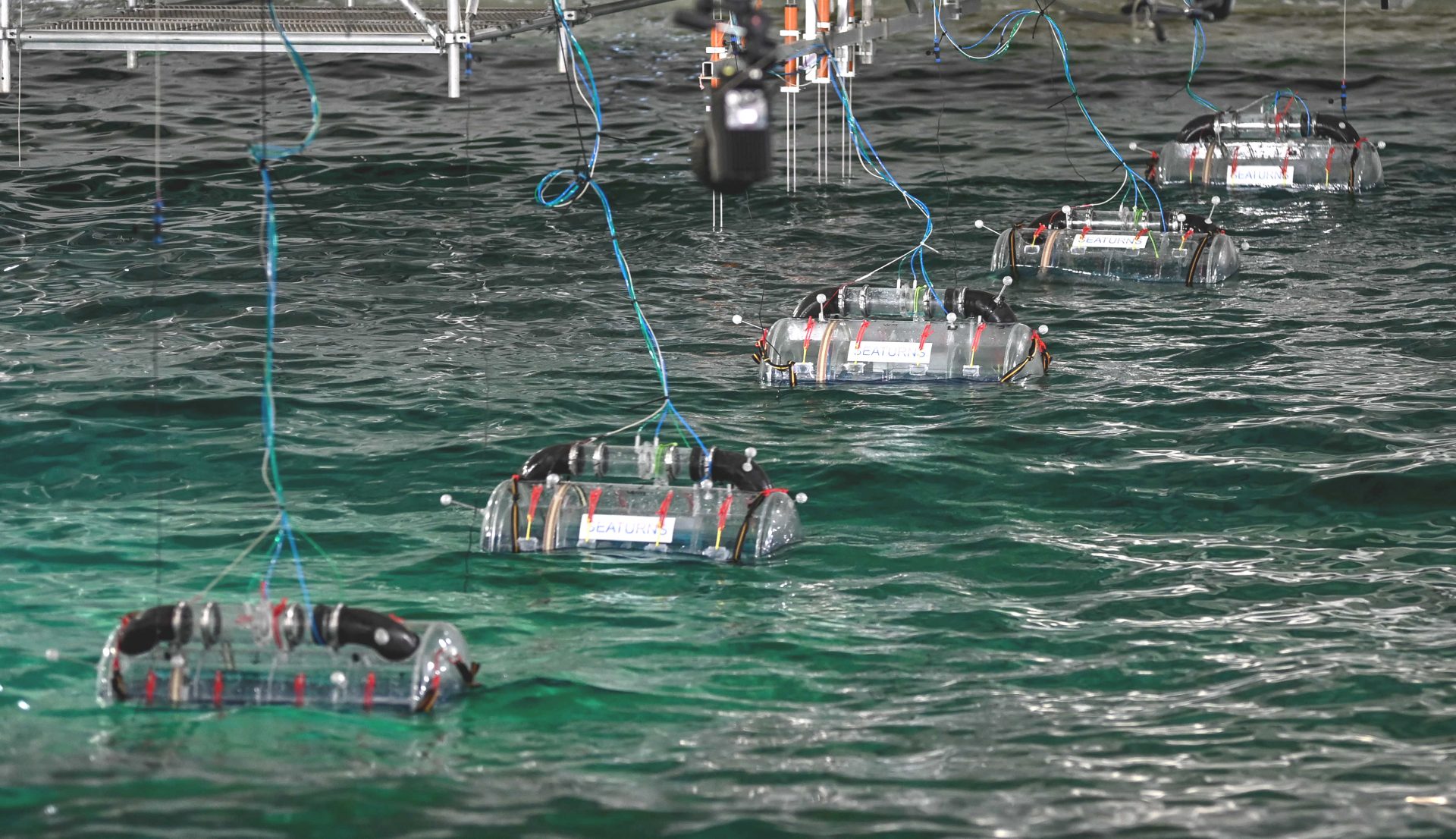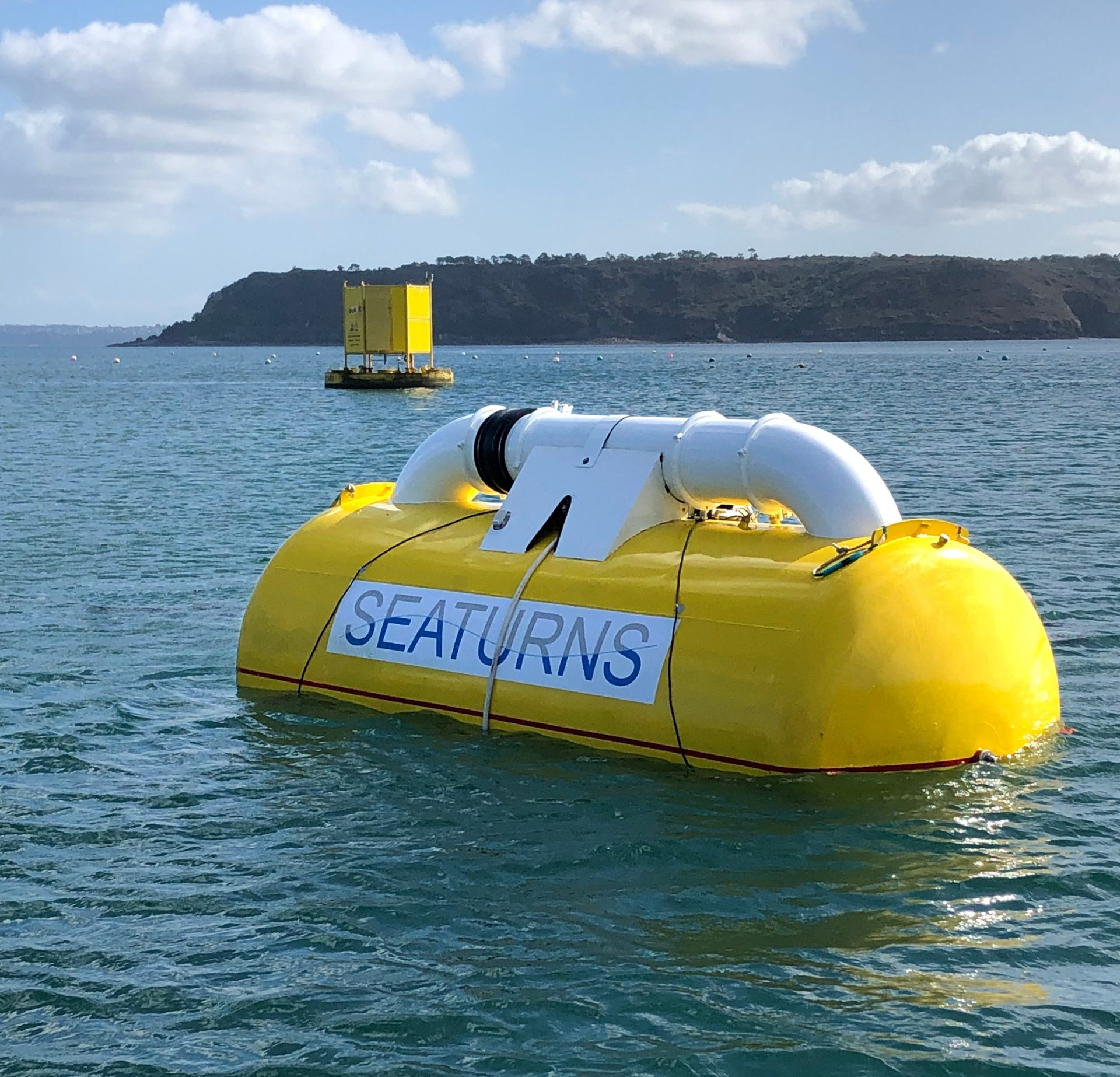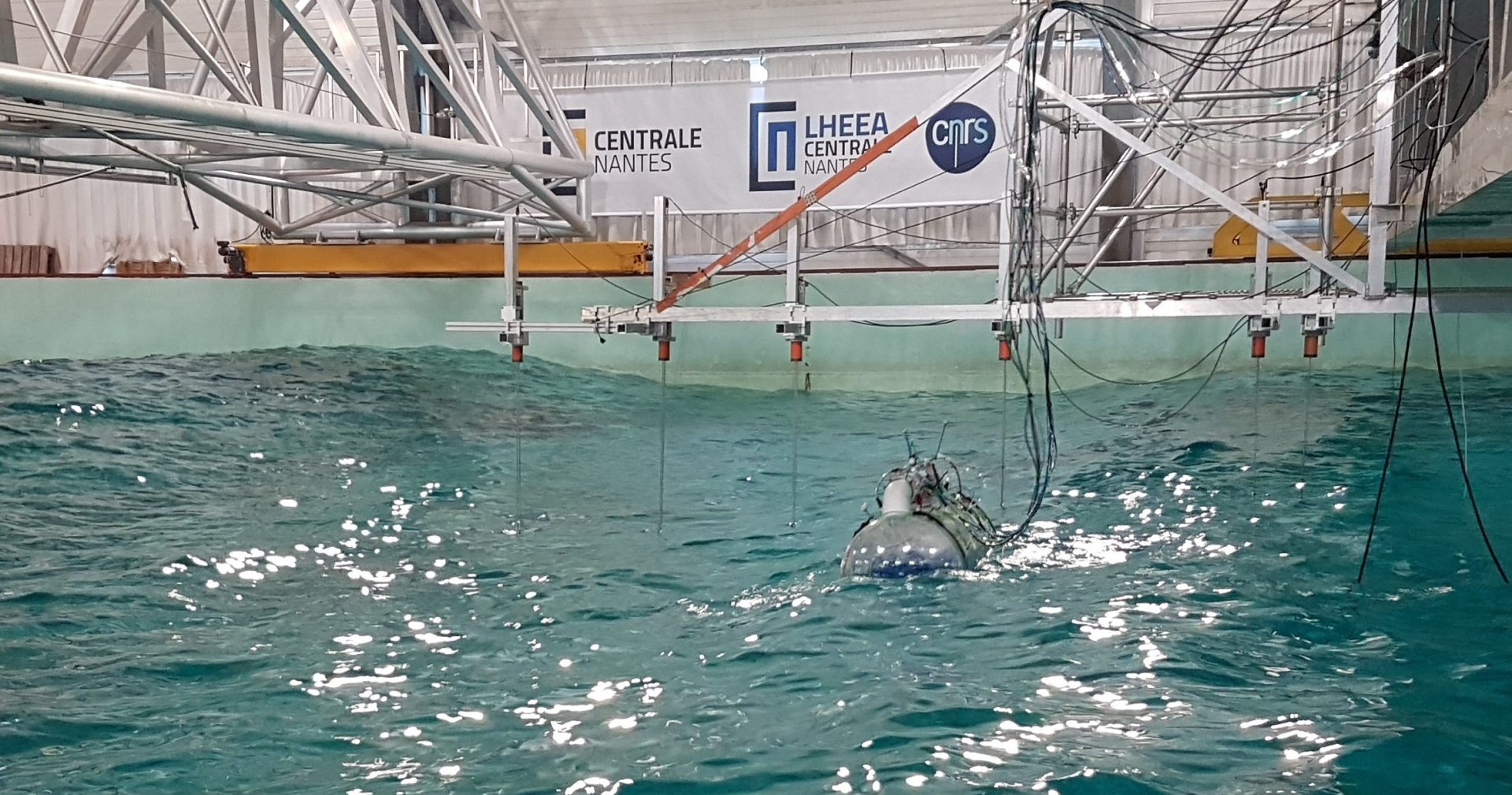Tank tests | Nantes | 2024


In April 2024, Seaturns is testing a farm in the wave and ocean engineering basin of the LHEEA Centrale Nantes, the Laboratoire de recherche en Hydrodynamique, Énergétique et Environnement Atmosphérique at École Centrale de Nantes. Following on from the tests carried out in 2023, Seaturns is validating the 1/15-scale multi-floaters configuration for future offshore wave farms. Analysis focuses on the performance and survival of 5 floaters installed on the same mooring line, a significant new step in the development of this innovative wave technology.
This tank tests phase is part of the wider IAS-WEC project, which won in July 2023 the i-Nov competition organised by Bpifrance and ADEME. It is financed by the French government as part of France2030 and by the European Union – Next Generation EU as part of the France Relance plan.
Sea trials | Sainte-Anne du Portzic | 2023-2025


In October 2023 Seaturns starts sea trials on a 1/4-scale demonstrator. It is installed at Ifremer’s sea trials site in Sainte-Anne du Portzic near Brest (France).
These tests are being conducted in partnership with Ifremer and will last until early 2025. They will validate the performance and reliability of a prototype in a marine and operational environment.
This sea trials phase, which is a strategic part of Seaturns’ roadmap, is part of the wider IAS-WEC project, which won in July 2023 the i-Nov competition organised by Bpifrance and ADEME. It is financed by the French government as part of France2030 and by the European Union – Next Generation EU as part of the France Relance plan.
Tank tests | Nantes | 2023


In February 2023, Seaturns is conducting two weeks of tests in the wave and ocean engineering basin of the LHEEA Centrale Nantes, the Laboratoire de recherche en Hydrodynamique, Énergétique et Environnement Atmosphérique at École Centrale de Nantes. These tests enable establishing reference power matrices to evaluate energy performance in greater detail, and analysing survival configurations in severe sea states.
These tests were funded by the Nouvelle-Aquitaine region as part of an R&D start-up innovation support contract.
Tank tests | Santander | 2021

In May-June 2021, Seaturns conducts two weeks of tests at Cantabria Coastal and Ocean Basin, the wave basin of IH Cantabria in Spain. These trials enable testing a wave energy converter at a scale of 1:10, which is a great step forward in Seaturns’ R&D programme. At this scale, it is possible to test an energy capture turbine and moorings representative of current practices in the offshore sector.
The access to the basin was funded by the European Union as part of the MaRINET2 programme.
Tank tests | Porto | 2020

In November 2020, Seaturns conducts two weeks of tests in the wave basin of Porto University. The objective of these tests is to optimise the performance and to characterise the behavior of the system in multi-floaters configuration, in different sea states. The resistance in extreme conditions, with survival waves at varied incidences, is also tested.
The access to the basin was funded by the European Union as part of the Interreg Atlantic Area PORTOS Project.
Tank tests | Aalborg | 2020

In February-March 2020, Seaturns conducts two weeks of tests in the wave basin of Aalborg University (Denmark). The objective of these tests is to optimise the performance of the system and to characterise the behavior of the floater in different sea states. The resistance in extreme conditions (survival waves) and the operation of two associated floats on the same mooring line are also tested.
These tests have been supported by the Nouvelle-Aquitaine region, and the access to the basin was funded by the European Union as part of the MaRINET2 programme.
The proof of concept | Nantes | 2017

The tests at the École Centrale Nantes LHEEA wave basin have shown that the concept is able to absorb much of the incident energy of the waves and convert it into pneumatic power.
From the simple proof-of-concept phase a “capture width ratio” larger than 20 % could be observed, an easily improved value by optimisation studies.